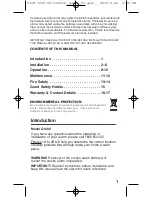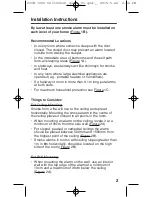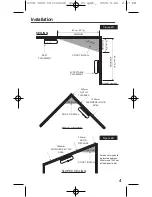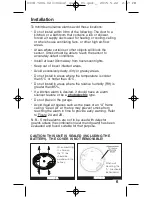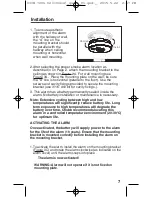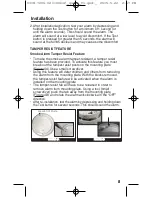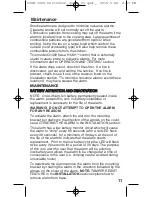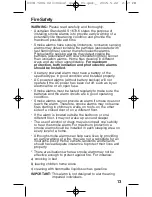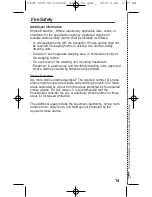
Smoke alarms are designed to minimise nuisance alarms.
Cigarette smoke will not normally set off the alarm.
Combustion particles from cooking may set off the alarm if the
alarm is located close to the cooking area. Large quantities of
combustible particles are generated from spills or when
broiling. Using the fan on a range hood which vents to the
outside (non-recirculating type) will also help remove these
combustible products from the kitchen.
This model Q1400 has a HUSH
TM
control that is extremely
useful in areas prone to nuisance alarms. For more
information refer to OPERATION AND TESTING" section.
If the alarm does sound, check for fires first. If a fire is
discovered, get out and call the fire service. If no fire is
present, check to see if one of the reasons listed on the
Installation section, "To minimise nuisance alarms avoid these
locations", may have caused the alarm.
MAINTENANCE
B
BA
AT
TT
TE
ER
RY
Y A
AC
CT
TIIV
VA
AT
TIIO
ON
N A
AN
ND
D D
DE
EA
AC
CT
TIIV
VA
AT
TIIO
ON
N
NOTE: One Lithium-Ion battery, permanently sealed inside
the alarm, powers this unit; no battery installation or
replacement is necessary for the life of the alarm.
WARNING! DO NOT ATTEMPT TO OPEN THE ALARM
FOR ANY REASON!
To activate the alarm, attach the alarm to the mounting
bracket by rotating in the direction of the arrows on the cover,
see ACTIVATING THE ALARM in the INSTALLATION section.
This alarm has a low battery monitor circuit which will cause
the alarm to "chirp" every 60 seconds (with a red LED flash
every 30 seconds), for a minimum of 30 days, at the end of
the life of the alarm to indicate that the alarm needs
replacement. Prior to the low battery chirp the LED will flash
twice every 30 seconds for a period of 30 days. The purpose
of this is to alert the user that the alarm will be entering
low-battery and allows the alarm to be changed at a time of
convenience to the user (i.e. chirping can be avoided during
unsociable hours).
To deactivate the alarm remove the alarm from the mounting
bracket by rotating the alarm in the direction indicated by the
arrows on the cover of the alarm.
NOTE:
TAMPER RESIST
FEATURE in the
INSTALLATION
section explains how to
remove alarm from base.
Maintenance
10
11
0308-7206-02(130414)_quell_V1.qxd:_ 2015.5.22 2:17 PM Page 12


